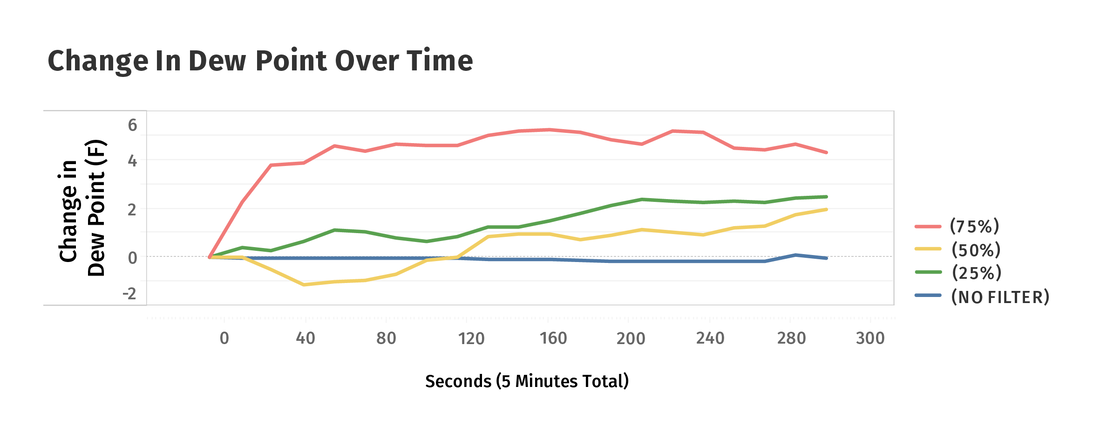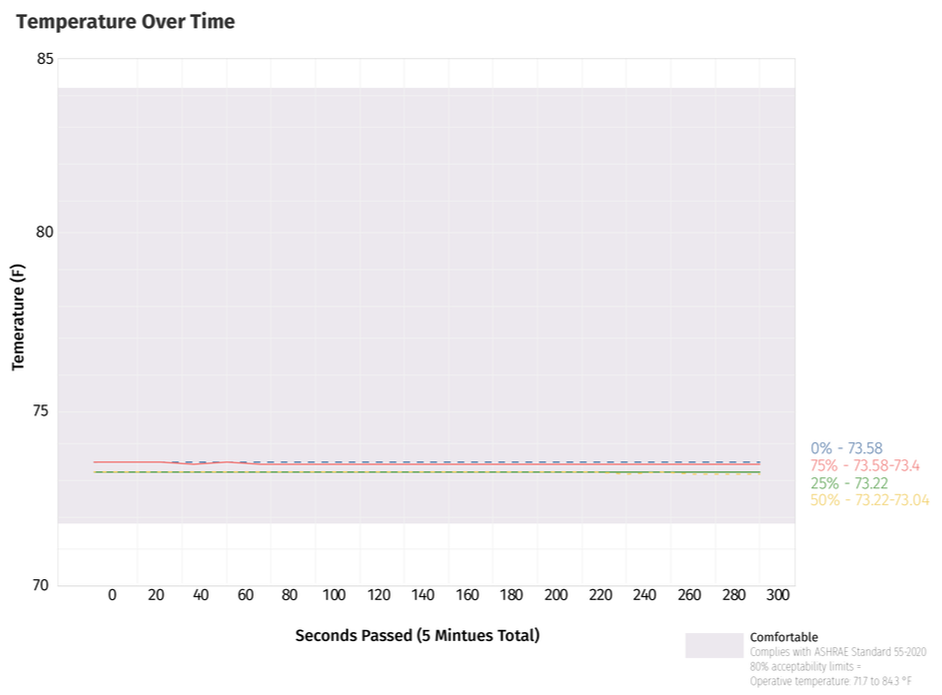Results
The results above show an overall increase in all 3 tests in which there was the added presence of the planted surface. These results support my hypothesis. While the temperature of the spaces did not change more than 0.25 degrees Fahrenheit over the course of any of the 4 tests (see graph below), the environments with the added planted surface felt more comfortable due to the increase in the dew point of the space during the testing period. Also as suspected, the space with the 75% exposed planted surface saw the highest change in dew point over time.
Future Expansion of this Research
- See how the regular temperature swing of a day effects the results
- Test to see if the orientation of the planted surface makes a difference - could the same effect be accomplished with a simple footprint of a room being planted or with linear shelves of planted surfaces (hybrid vertical horizontal of sorts here) or perhaps columns of planted surface (like that of the Perez Museum exterior)?
- Somehow test to see if the photosynthesis is causing these results or is it more simply the presence of water from the plants/transpiration? Could the same effect be made by incorporating small amounts of humidity (via a humidifier) in a space?
- See how the regular temperature swing of a day effects the results
- Test to see if the orientation of the planted surface makes a difference - could the same effect be accomplished with a simple footprint of a room being planted or with linear shelves of planted surfaces (hybrid vertical horizontal of sorts here) or perhaps columns of planted surface (like that of the Perez Museum exterior)?
- Somehow test to see if the photosynthesis is causing these results or is it more simply the presence of water from the plants/transpiration? Could the same effect be made by incorporating small amounts of humidity (via a humidifier) in a space?

